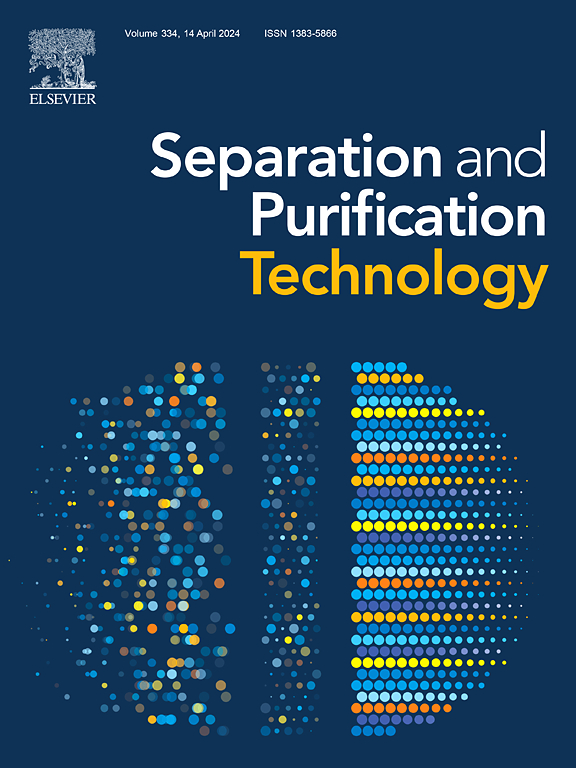Tubular SiC membranes in brine purification: Effects of operational parameters towards low energy consumption process
IF 8.1
1区 工程技术
Q1 ENGINEERING, CHEMICAL
引用次数: 0
Abstract
Brine purification process using ceramic membrane has the advantages of short process, high filtration precision, low cost and long life. Silicon carbide (SiC) ceramic membranes are featured by excellent hydrophilicity and unique negatively charged surface. This work focused on the application of low-temperature reaction bonded SiC membranes in brine purification, and commercial SiC membranes prepared by the recrystallisation method were also adopted for comparison. Under low-energy conditions (transmembrane pressure ≤ 0.1 MPa, crossflow velocity ≤ 2 m·s-1), the low-temperature reaction bonded SiC membranes exhibited higher stable flux and superior antifouling performance (i.e., lower flux decline), attributed to the formation of a cake layer on the membrane surface. However, at high pressures (>0.1 MPa) and velocities (>2 m·s-1), some precipitated particles entered the pores of reaction bonded SiC membranes, resulting minor pore blockage, reducing permeability. Interestingly, the gradually increased initial permeate flux observed in cycling filtration was attributed to the increased surface hydrophilicity of SiC membranes. Therefore, low temperature reaction bonded SiC membranes can provide a high-efficient and energy-saving brine purification process in the chlor-alkali industry.

求助全文
约1分钟内获得全文
求助全文
来源期刊

Separation and Purification Technology
工程技术-工程:化工
CiteScore
14.00
自引率
12.80%
发文量
2347
审稿时长
43 days
期刊介绍:
Separation and Purification Technology is a premier journal committed to sharing innovative methods for separation and purification in chemical and environmental engineering, encompassing both homogeneous solutions and heterogeneous mixtures. Our scope includes the separation and/or purification of liquids, vapors, and gases, as well as carbon capture and separation techniques. However, it's important to note that methods solely intended for analytical purposes are not within the scope of the journal. Additionally, disciplines such as soil science, polymer science, and metallurgy fall outside the purview of Separation and Purification Technology. Join us in advancing the field of separation and purification methods for sustainable solutions in chemical and environmental engineering.
 求助内容:
求助内容: 应助结果提醒方式:
应助结果提醒方式:


